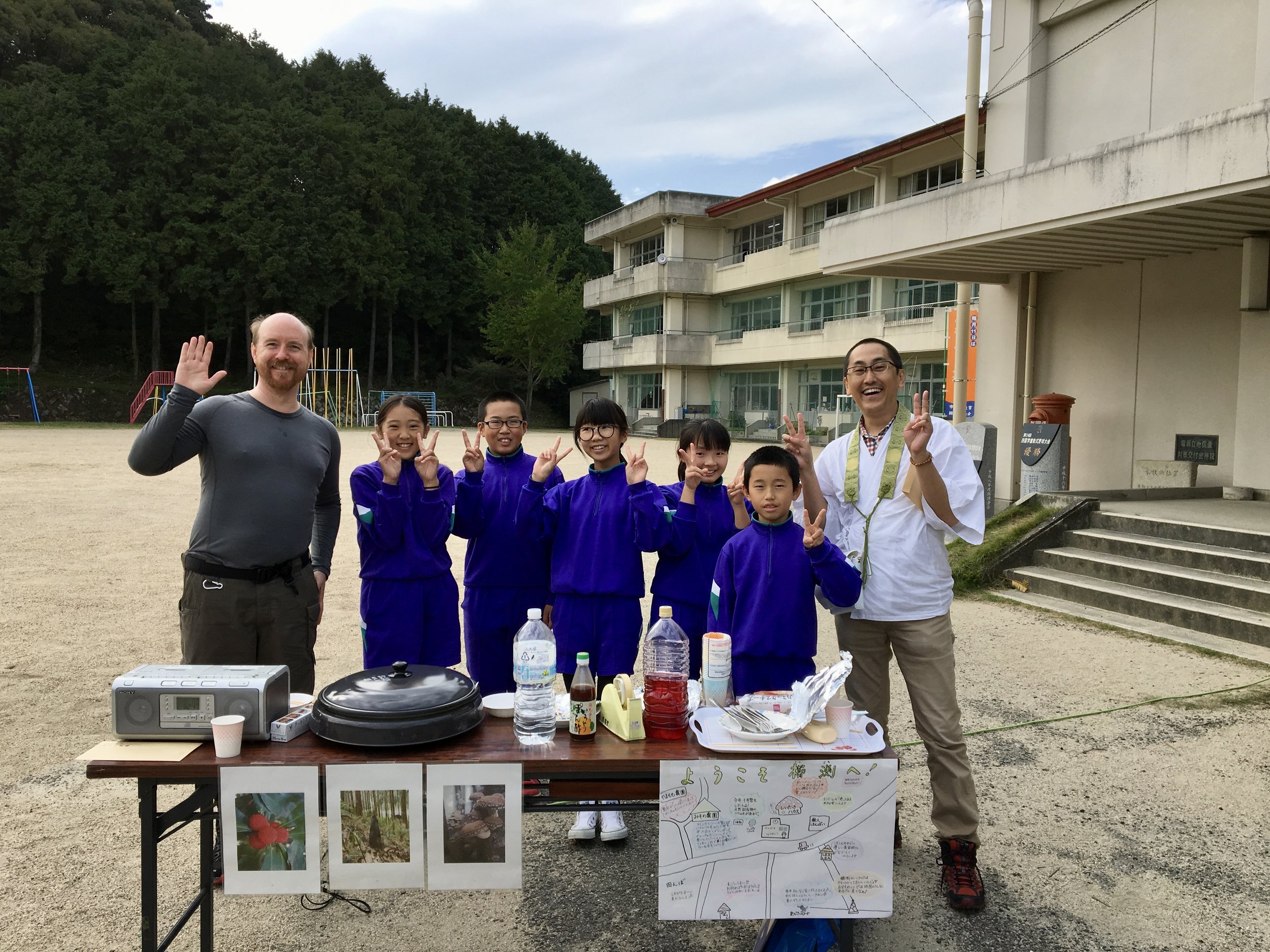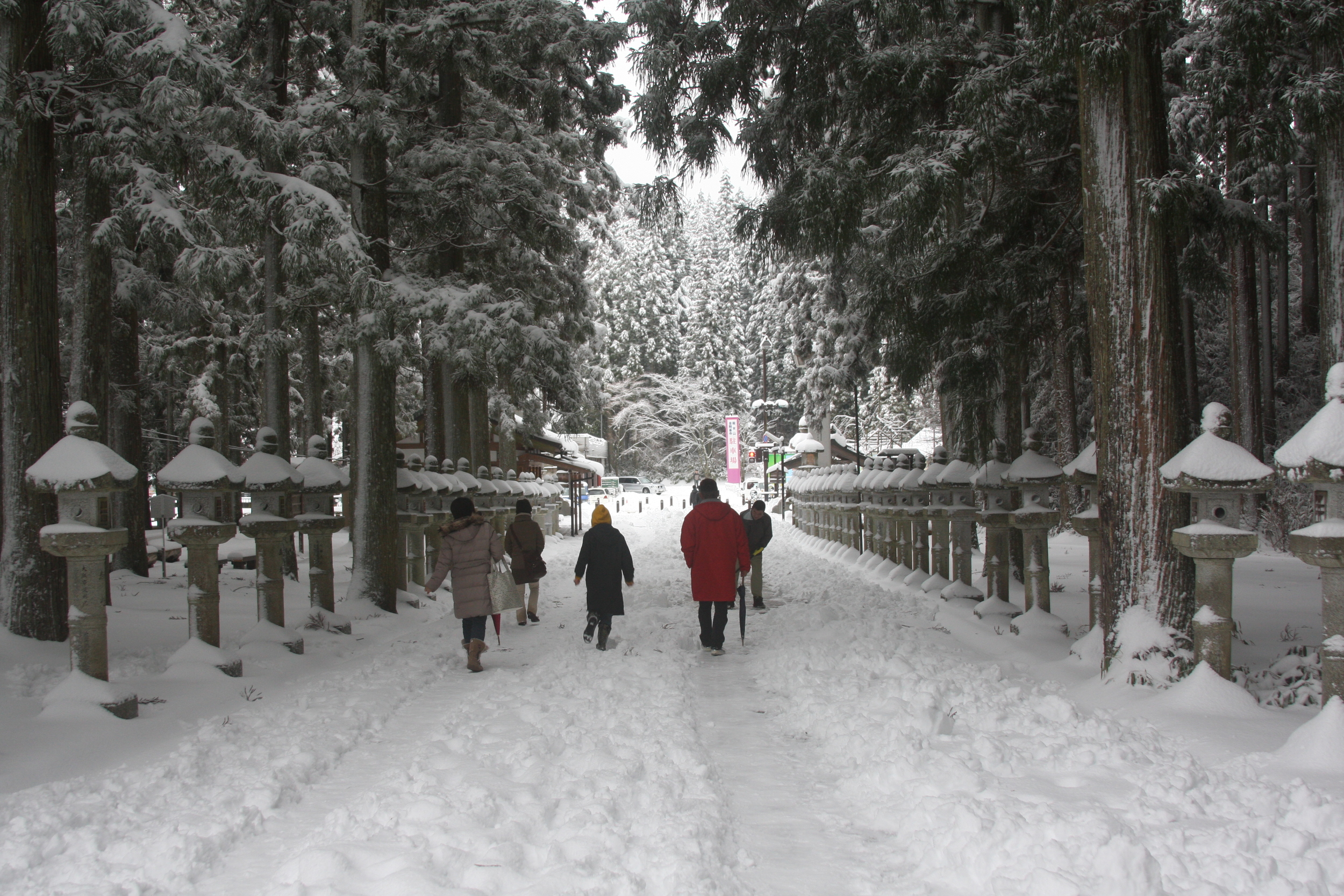I knew that my Henro pilgrimage was over when I spent more on conveyances in a day than I had spent in total on accommodations in the previous 2 weeks. Not to say I hadn’t boarded a bus or two along the way; the rules of the walking pilgrim are a little fuzzy.
Most modern pilgrims do the path by bus, in large groups. After that, traveling by car is also popular. Walkers make up a small portion of the total number that travel the old path. But what makes someone a “walking pilgrim”? For example, is it permissible to take a bus or train at the end of the day to one’s accommodations, especially if the place is off the established path? What about when typhoon(s) come? We had two typhoons during my trip, and I can say without embarrassment that each time, I found the biggest, strongest-looking, well-stocked hotel that had a good restaurant and bunkered myself inside.
One night, unable to move my legs after having accidentally attached myself to a 60+ year-old Japanese man walking (racing?) up and down mountains, I found an inn a town away that was in different direction than the Henro road. I decided a train would not violate the authenticity of my walking path and headed for the station. As I did, I ran into a man with whom I had shared a room last night and asked where he was going. As it turned out, he was headed to the same town. “Headed to the train station?” I asked. “No, I am a walking pilgrim”, he replied, and started on his way. It was 5 p.m. and it would be 3 hours before he would arrive.
I took the train. I lack the Hasidic-level purity of the true pilgrim. On the other hand, I always arrived before dinner. Still, the desire to be authentic drove me to make dumb decisions, like the day I decided I needed to cover 25 miles in one day on foot to make up for time lost due to the typhoon. I made it, though I could not no longer walk once I arrived.
In fact, there is no “right” way to do this journey. Most pilgrims wear a traditional hat that I think I mentioned before, the 菅笠 (Sugegasa). You don’t have to, of course – none of the garb, accoutrements, or rituals are mandatory. But if you decide to wear it, the hat always comes with a few phrases in Sanskrit and old Japanese. One of them reads:
“In essence, there is no east and west.
Where, then, is there a north and south?”
Part of the pilgrimage is about learning to let go of the meaningless things we construct to control our movements, thoughts, and feelings. Sometimes that takes time, reflection, and a little bit of exertion and sore feet. Sometimes it takes a giant dose of beautiful surroundings. In fear of my dreaded foe, boredom, I downloaded over 100 hours of books, podcasts, and music to pass the time while I walked. I barely listened to 8 hours of it. The sounds of the forest and the ocean were my companions when I was alone, and the steady beat of my walking staff kept the rhythm.
In a world with no rules, it might be a surprise to learn that there ARE rules for the pilgrimage: No lying, stealing, duplicity, defamation, sexual misconduct, anger, greed, flattery, or killing living things (on that last one, I ate A LOT of things that once had been alive, so I’m not sure about my compliance). No one teaches you these rules – I only found them on the internet while doing research. These rules are old Buddhist teachings – followed today by pilgrims who are usually not even practicing Buddhists.
It wasn’t until I returned to Tokyo that something struck me, but when it did, it was like a thunderclap: Not once in 3 weeks had I heard a word spoken in anger, in hate, in mistrust or prevarication. The seven deadly sins - envy, gluttony, greed, lust, pride, sloth, and wrath – a daily feature of my career – seemed to take a vacation during my journey. I hadn’t even taken notice of it until I returned to modernity in Tokyo, where these qualities are on full display.
The shock of returning to civilization was made more pronounced by the fact that it began with the breakfast buffet at the ANA Intercontinental Hotel in Roppongi, to which my friend S had treated me. Describing the buffet as resplendent does a disservice to the vastness and delicacy of the food. Heck, the first taste of actual, real cheese for the first time in 3 weeks felt like ice cream. The staggering beauty of the cornucopia could barely be shaken by the loud, repeated belching of the Chinese tourists, who also apparently found the buffet to be satisfying.
Perhaps it was a good thing, then, that in the evening I finally located a legendary old café called Lion in Shibuya. I’d heard about it for years, but never set out to find it – mostly because it means going into quarters that are less than desirable. But this night, I resolved to find it, for no other reason than that I could not handle any more bright lights, glamour, or commerce.
Lion is a funny place and Shibuya’s seedy red-light district is the last place you’d expect to find it. Nestled quietly among Dogenzaka’s love-hotels, “soaplands” (purveyors of erotic services), and sex shops, Lion has stood since 1926 and has barely changed in that time. Adorned in classic European design, an old chandelier, faded heavy drapes, wall-sconces, and dark wood, Lion has two simple rules: No Talking, No Photos.
Lion is not a place you go to talk. You go to Lion to listen to music – no, listen is not the right word. Worship. Worship, not in the Western sense, but in the Japanese sense – pay tribute, enjoy, absorb, and respect the classical recordings that resound like a church organ, soft but all-consuming. Like a church, all the seats face forward, towards a raised dais surrounded by old vinyl records and vintage stereo equipment. In place of the tabernacle stands a giant set of wooden loudspeakers - the entire café seems built around these enormous monuments, which themselves are preceded by a large bust of Beethoven – and they pour out the music programmed for the day: Brahms, Mendelssohn, Faure...
I did not take this picture!!! The credit/blame for this photo goes to Tosh Berman and his lovely blog, http://tamtambooks-tosh.blogspot.jp. So if anyone is getting banned from Lion, it's not me...
I said programmed and I mean it – when you arrive, you receive a menu and a program, and while there is room for requests, the café proprietor keeps the music moving by softly announcing each new piece through an ancient microphone.
Like so many places upon which I’ve stumbled in Japan, I wondered why everyone doesn’t come here all the time. It is a museum to an age when people just sat and listened to classical music while reading and drinking coffee. Admission is free. Open 7 days a week. And, it seems, there is always a seat.
Plus, you don’t need to know Japanese because there’s no talking allowed – just point at the bilingual menu, which simple: coffee, tea, lemonade, and ice cream, although I’m not sure we are agreed on the meaning of certain terms. I ordered a milk shake and received a glass of heavy cream poured over ice. I would have tried to ask the waiter about this issue, but again: No Talking.
Long before I left on this journey, I wondered if the pilgrimage would change me. Of course, it had short-term effects. Blisters, soreness, (temporary?) weight-loss, plus every time I walk across a bridge I try to remember to pick my walking stick off the ground, even when I'm not carrying it – legend has it that one night, Kobo-Daishi could not find a place to stay while walking the pilgrimage and had to sleep under a bridge. Now, pilgrims are expected to carry their staffs off the ground without tapping while crossing bridges, so as to avoid waking Kobo-Daishi.
I missed the staff more than I thought I would. I actually felt anxiety watching the ANA check-in desk staff at Kochi Airport pack up my 金剛杖 (Kongo Tsue, or walking staff) and send it into baggage. I understood that I couldn’t take it with me on the plane, but I hadn’t been ready for the fact that we (the staff and I) would have to part for the first time in 3 weeks. The staff is said to be the embodiment of Kobo-Daishi, and with it, one never walks the pilgrimage alone. Dogyo Ninin – One Path, Two People - is written on many of them. Seeing the care and respect the women behind the airport counter showed for it just made it worse, and as they carefully placed it in a special ANA box provided for fragile and valuable items, I teared-up and ran off like a parent leaving a child at her first day of school.
Such foolishness will fade, of course, and it will be easy to fall back into old habits. But sitting within the ancient walls of Lion, listening to a 1950’s recording of David Oistrakh playing the Franck violin sonata, I thought maybe the pilgrimage had changed me, at least a little.
As I sat there, I felt no need to read, or write, to surf the net or check email. I felt no worries about tomorrow and no regrets about yesterday. I had things to do, and things I should not have done, but they did not weigh on me like an albatross. Maybe it will last, maybe not. But for a few hours, at least, I got to experience life in a way I had not in a long, long time. It was worth it.




































